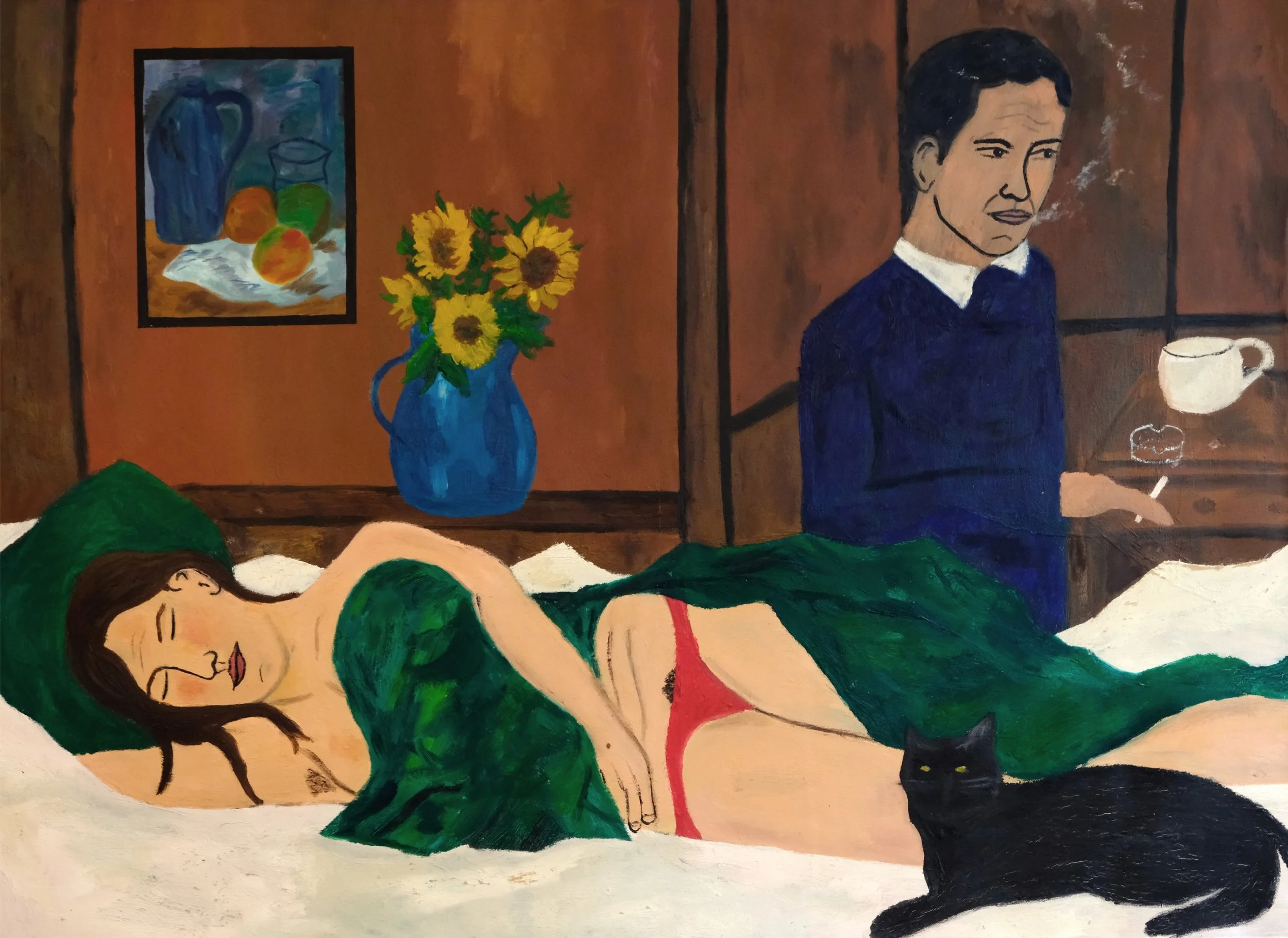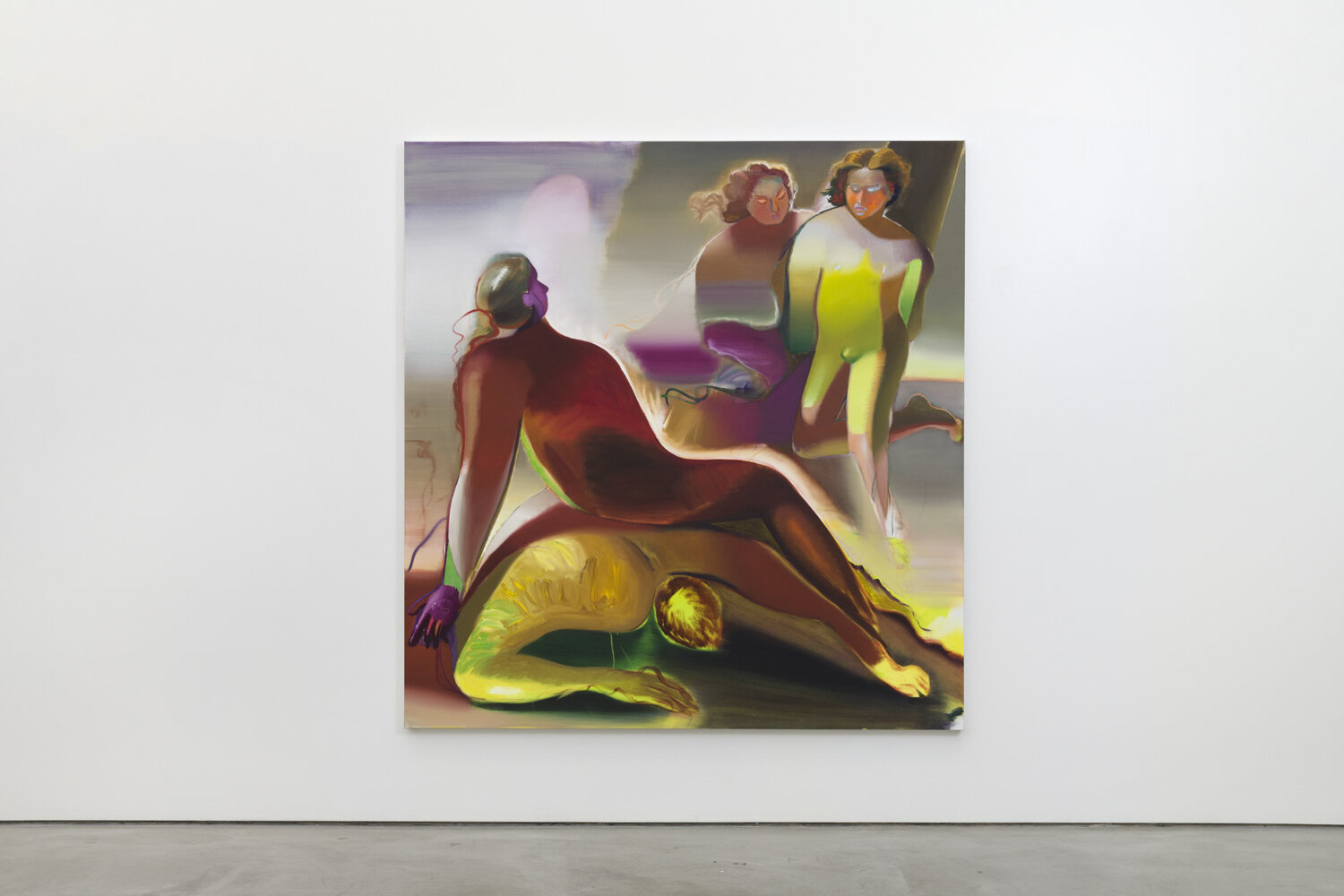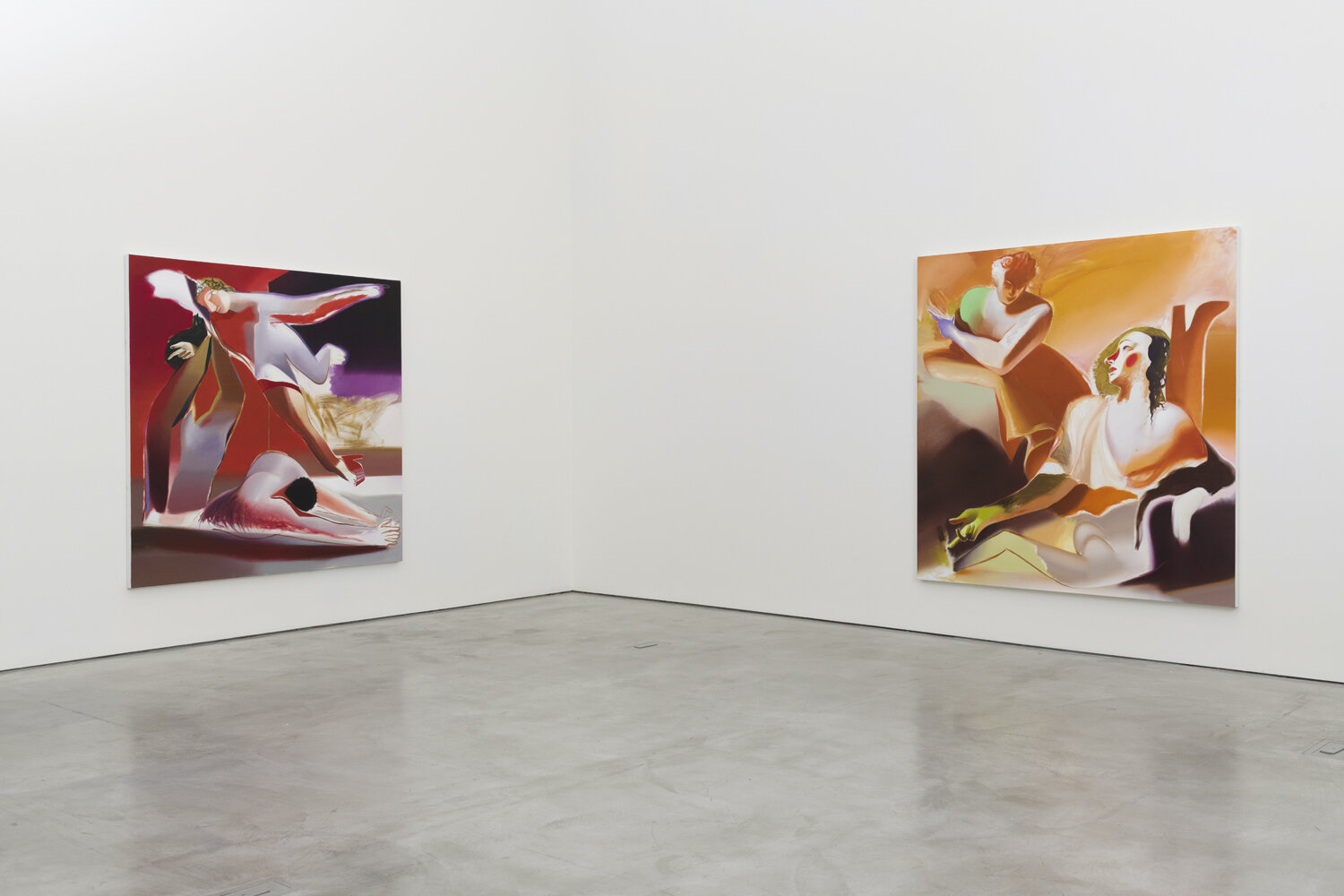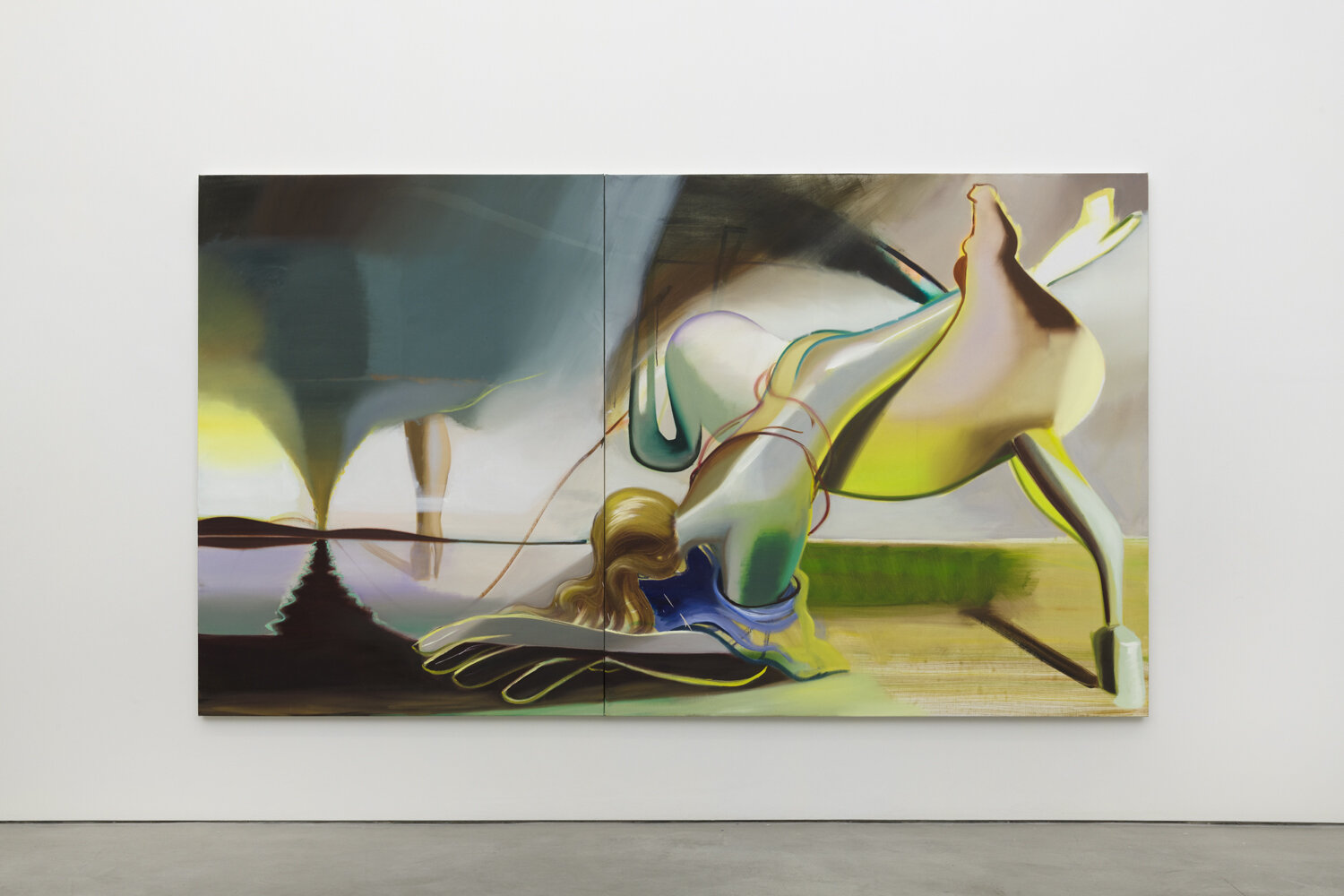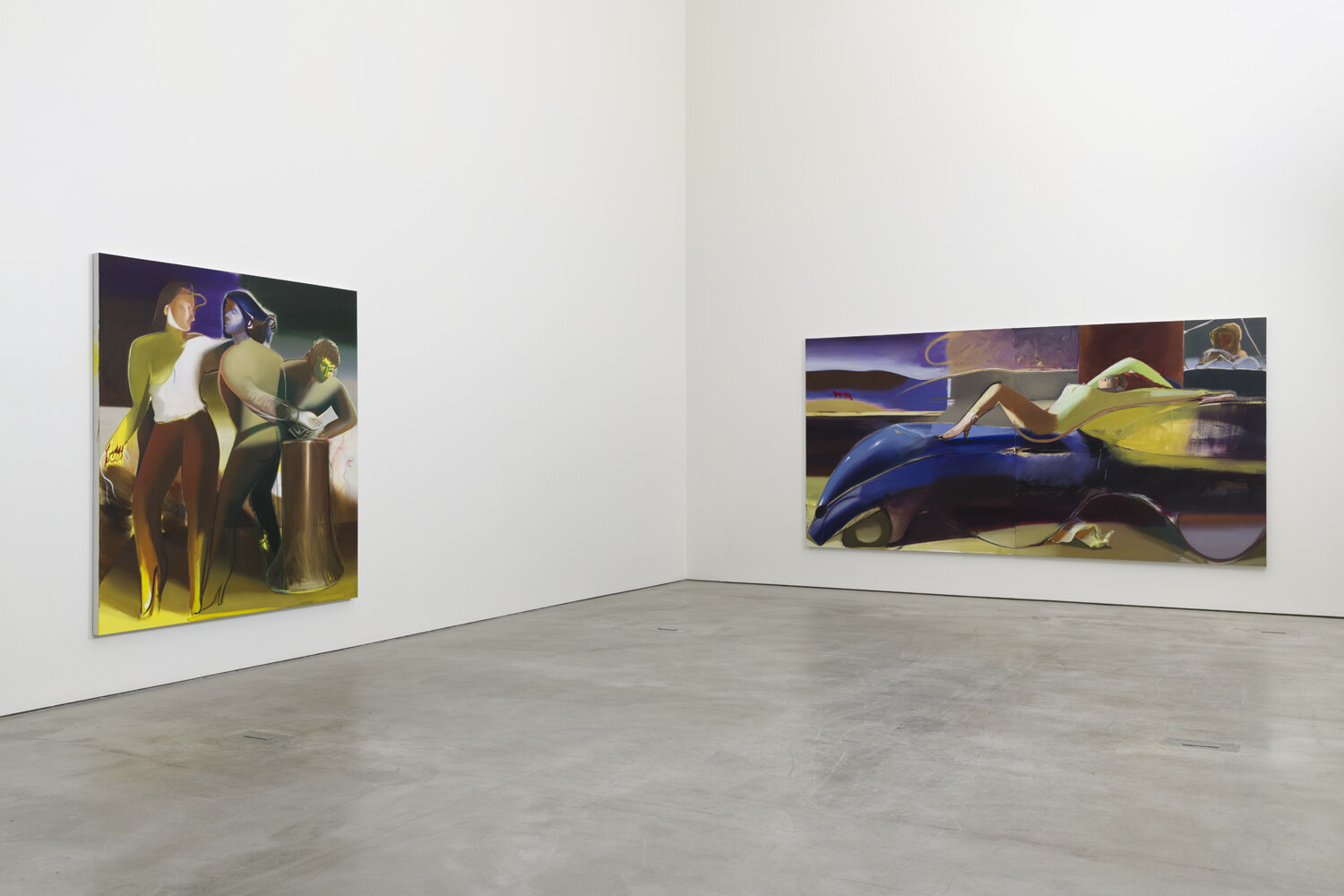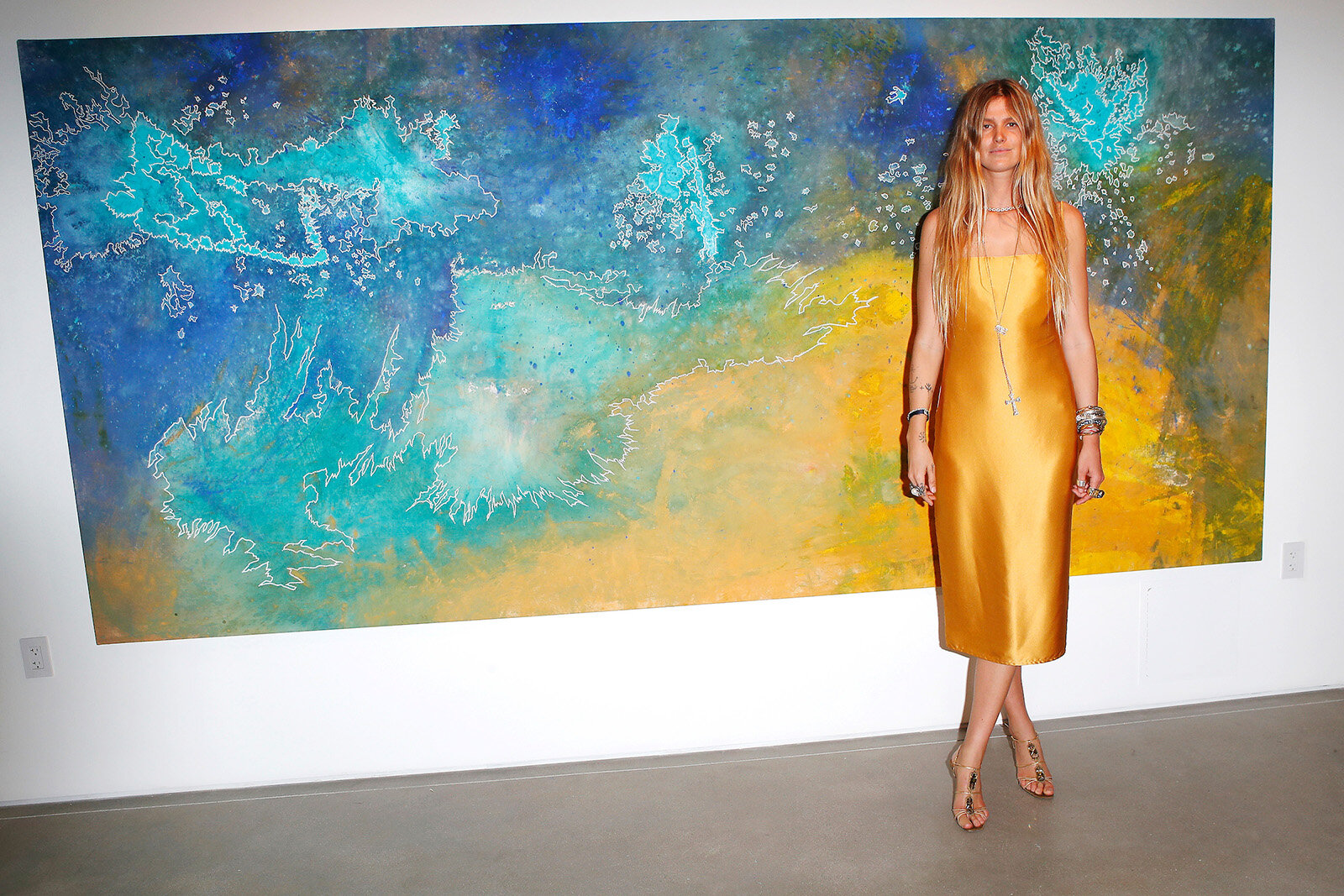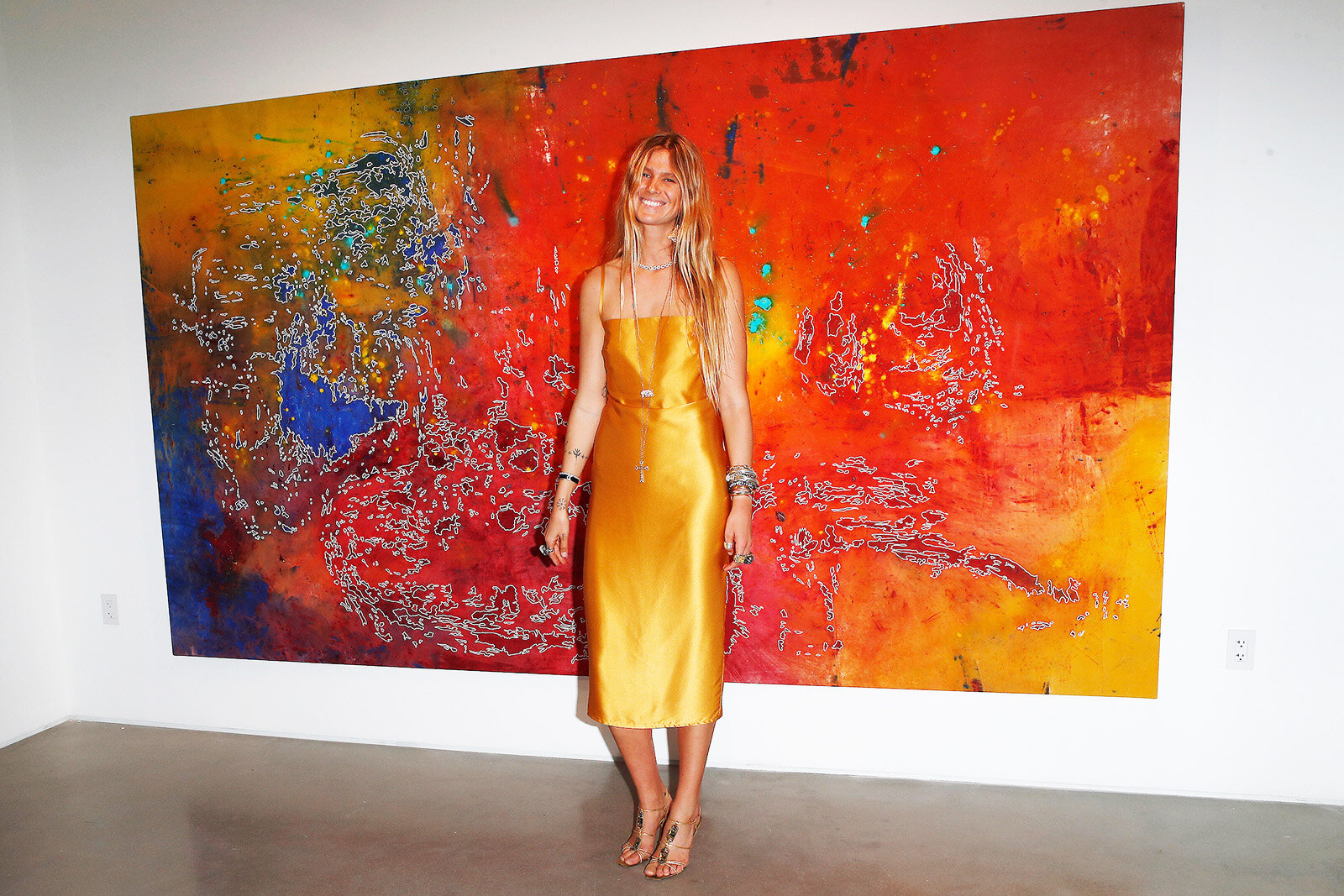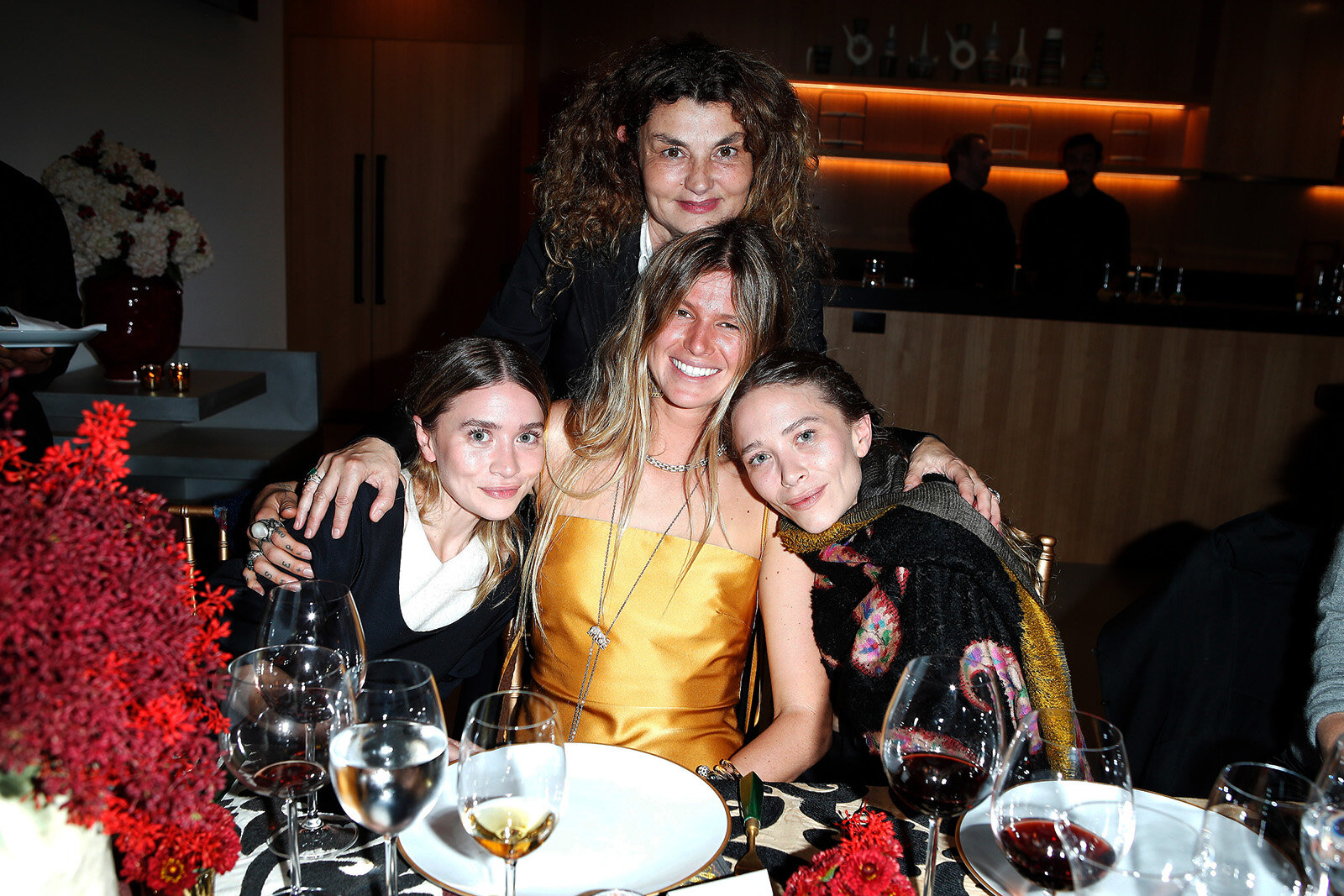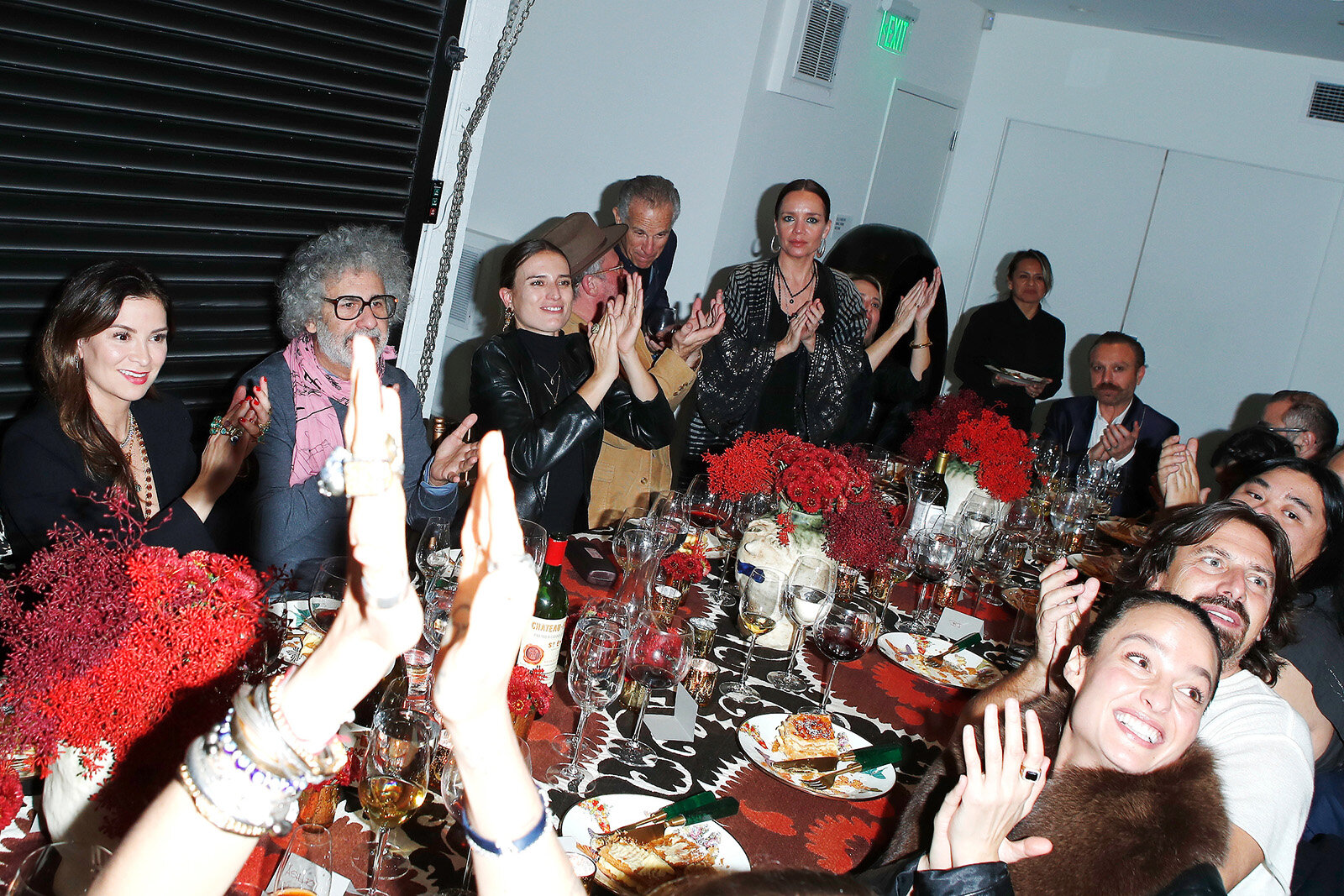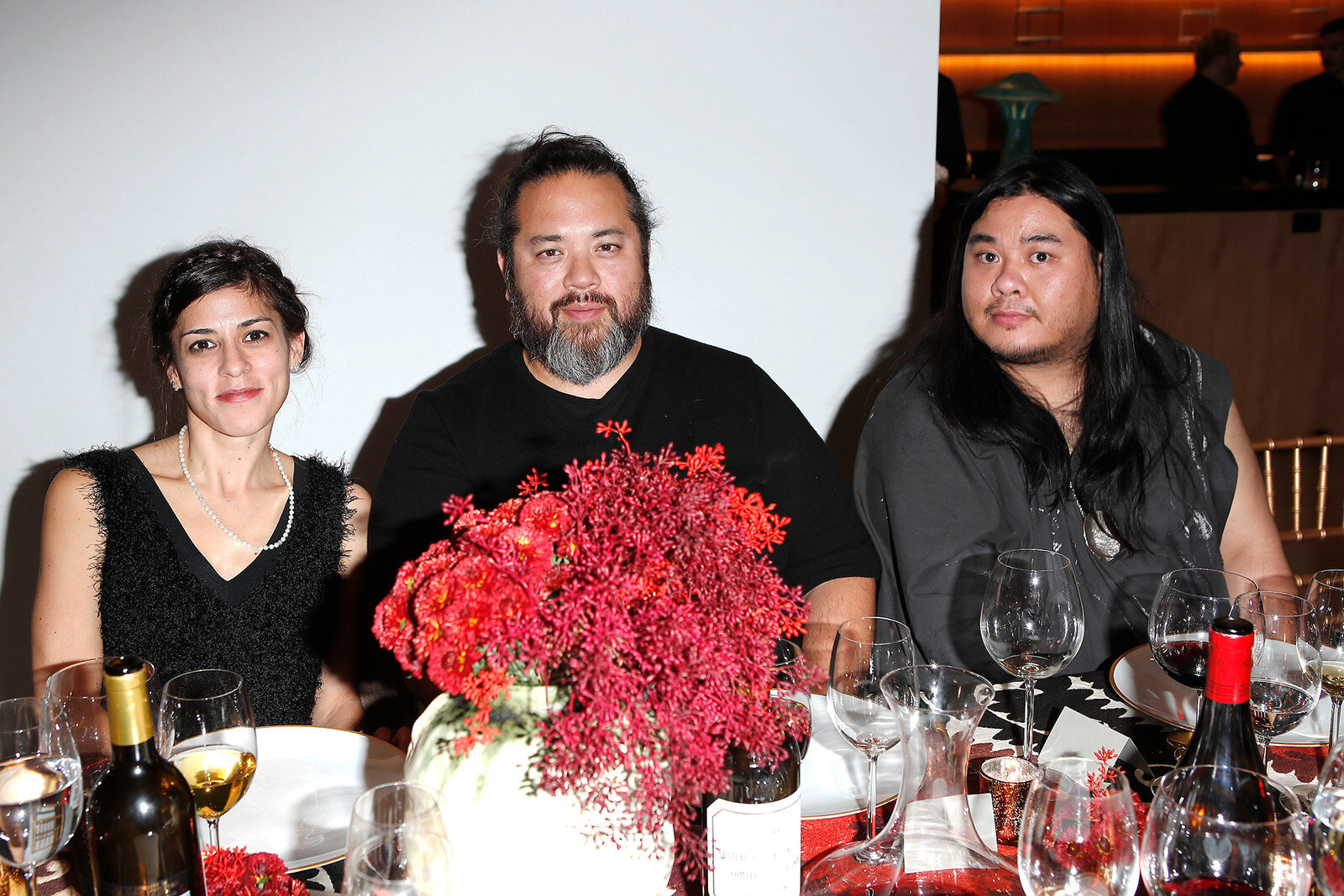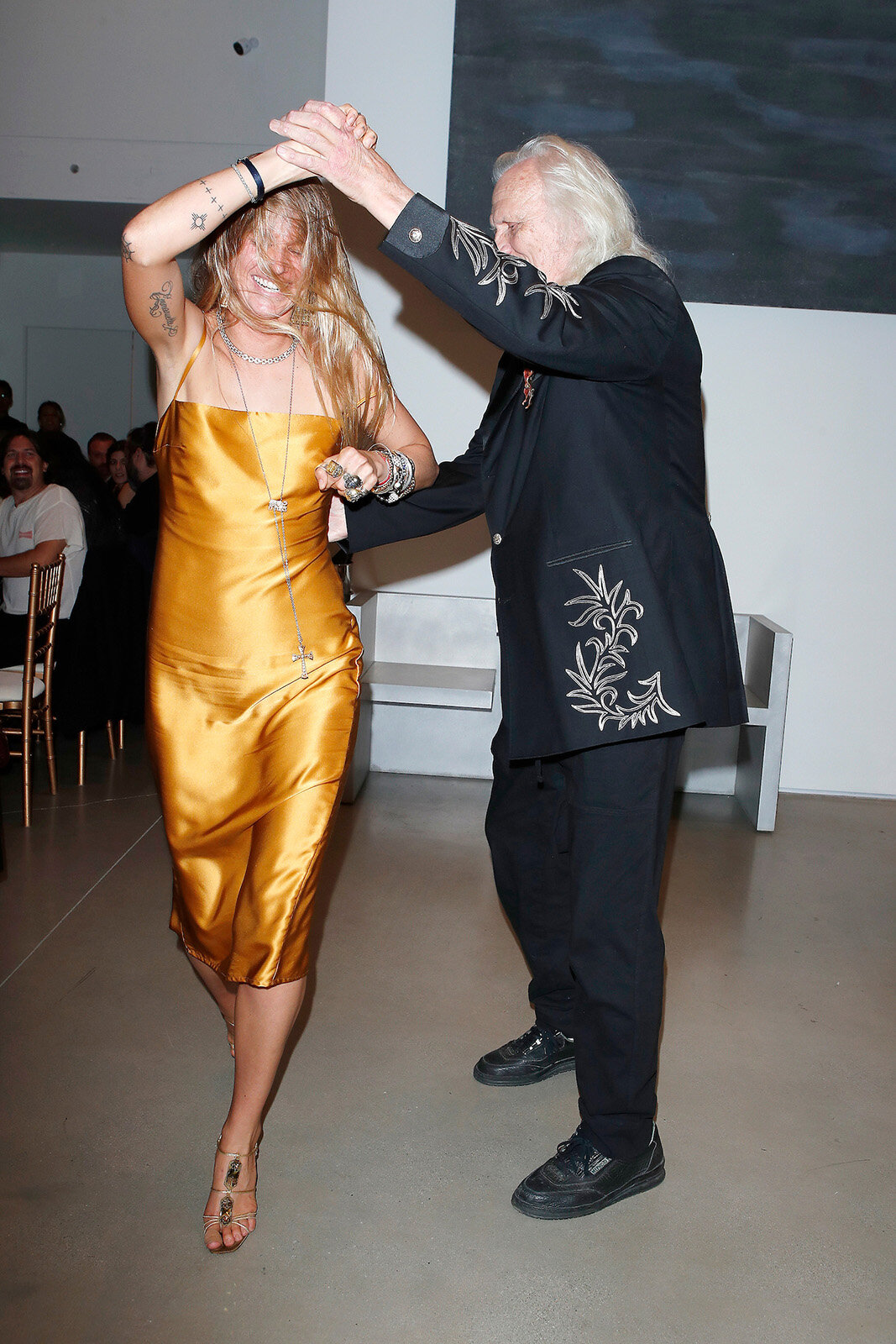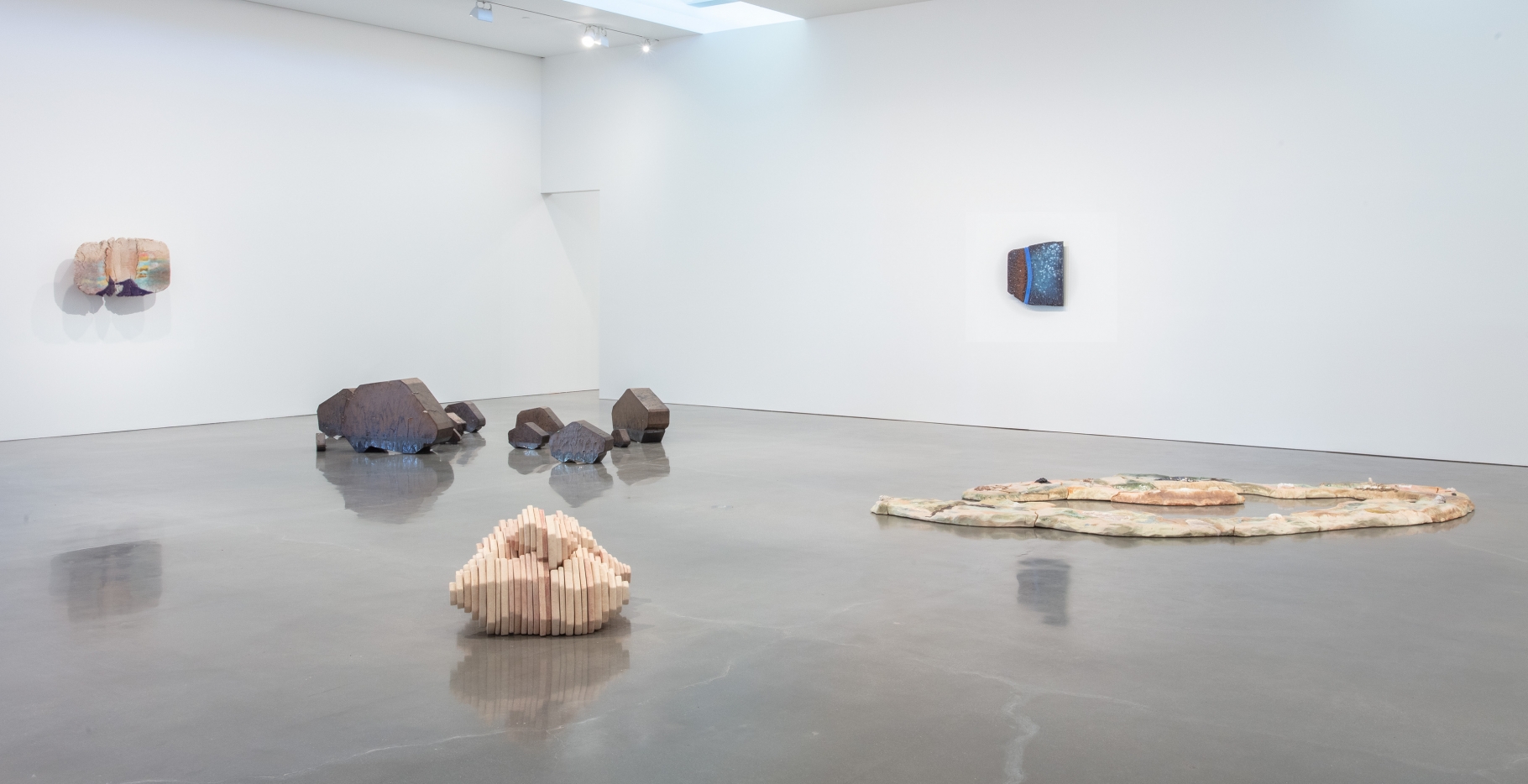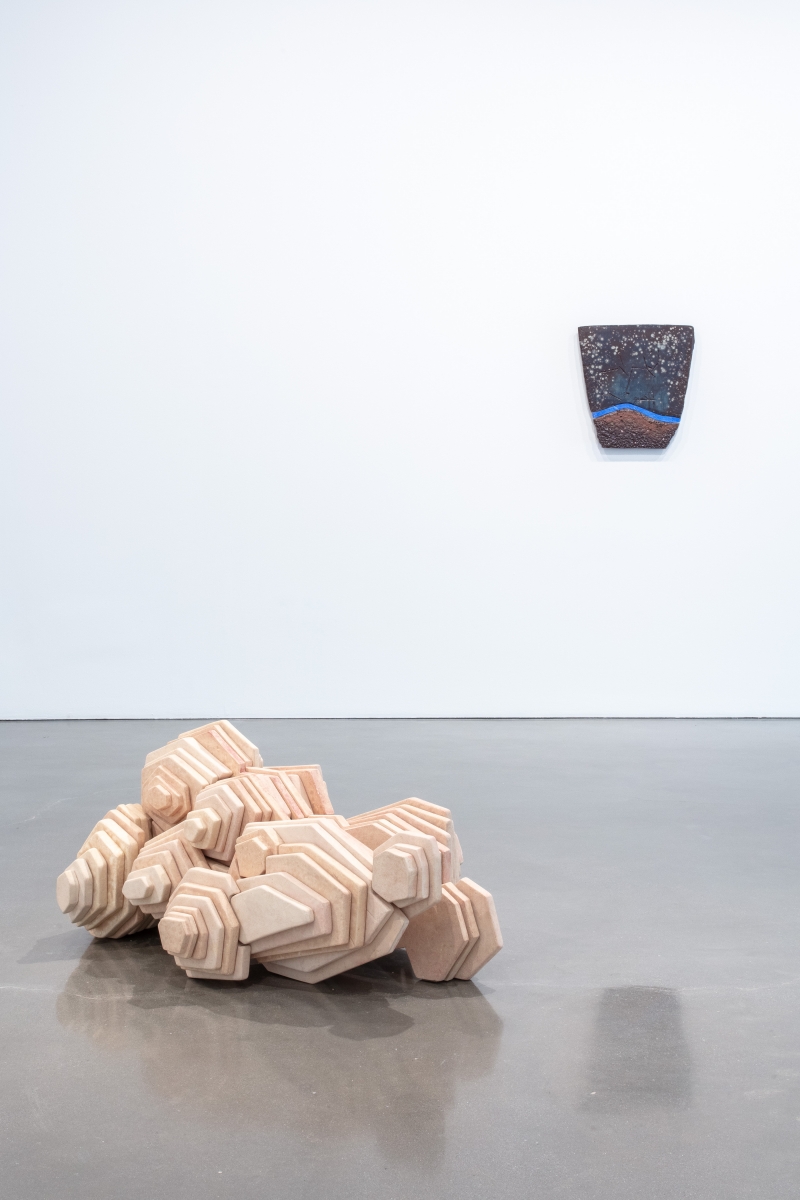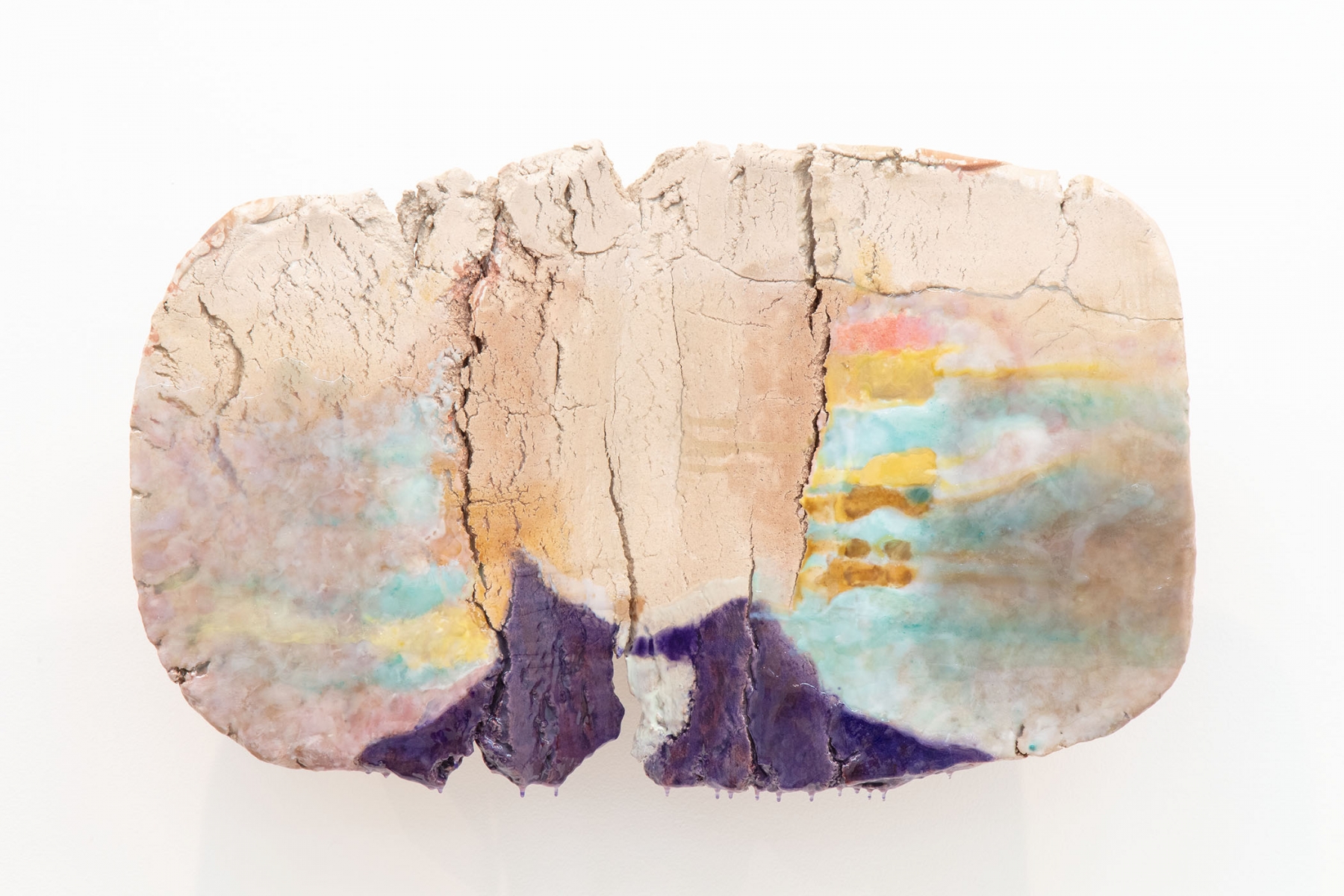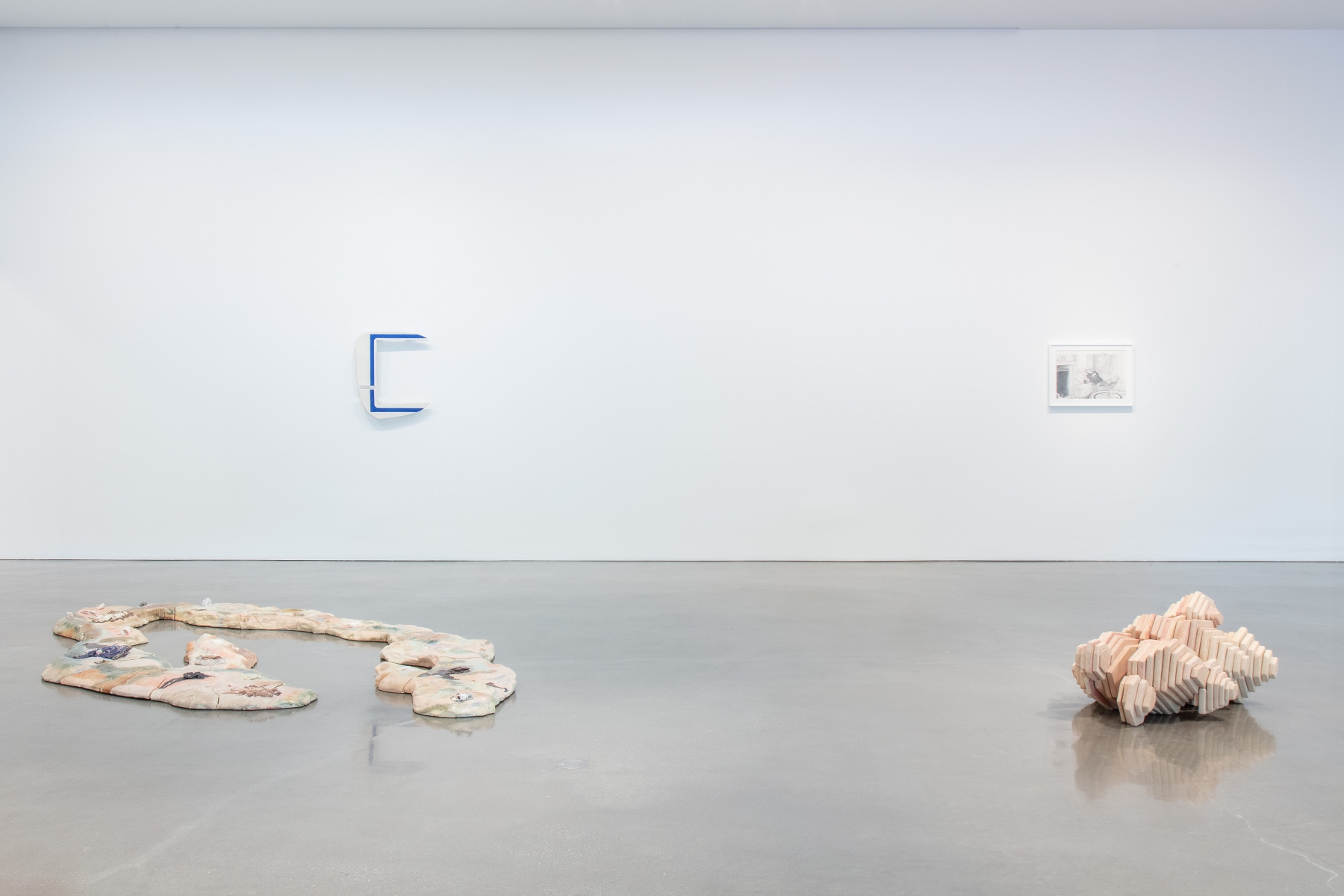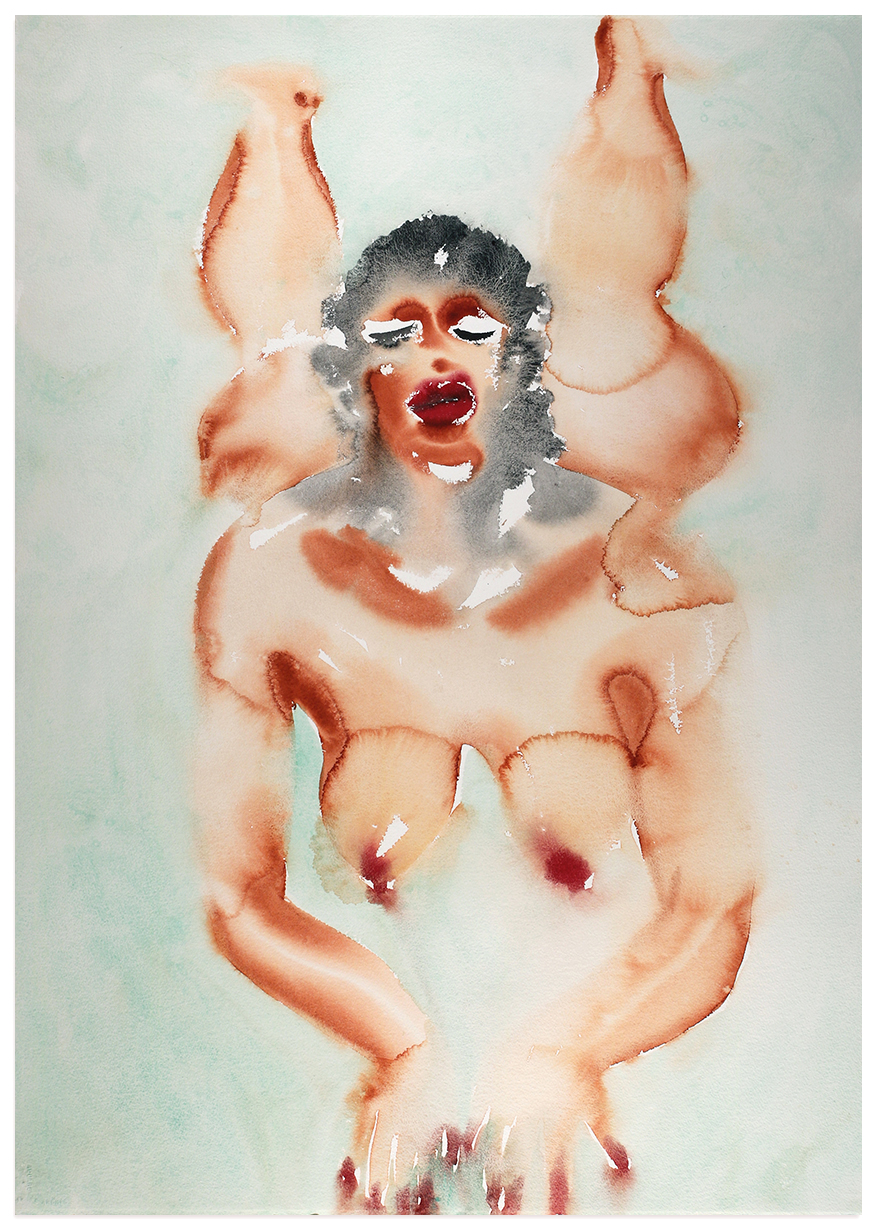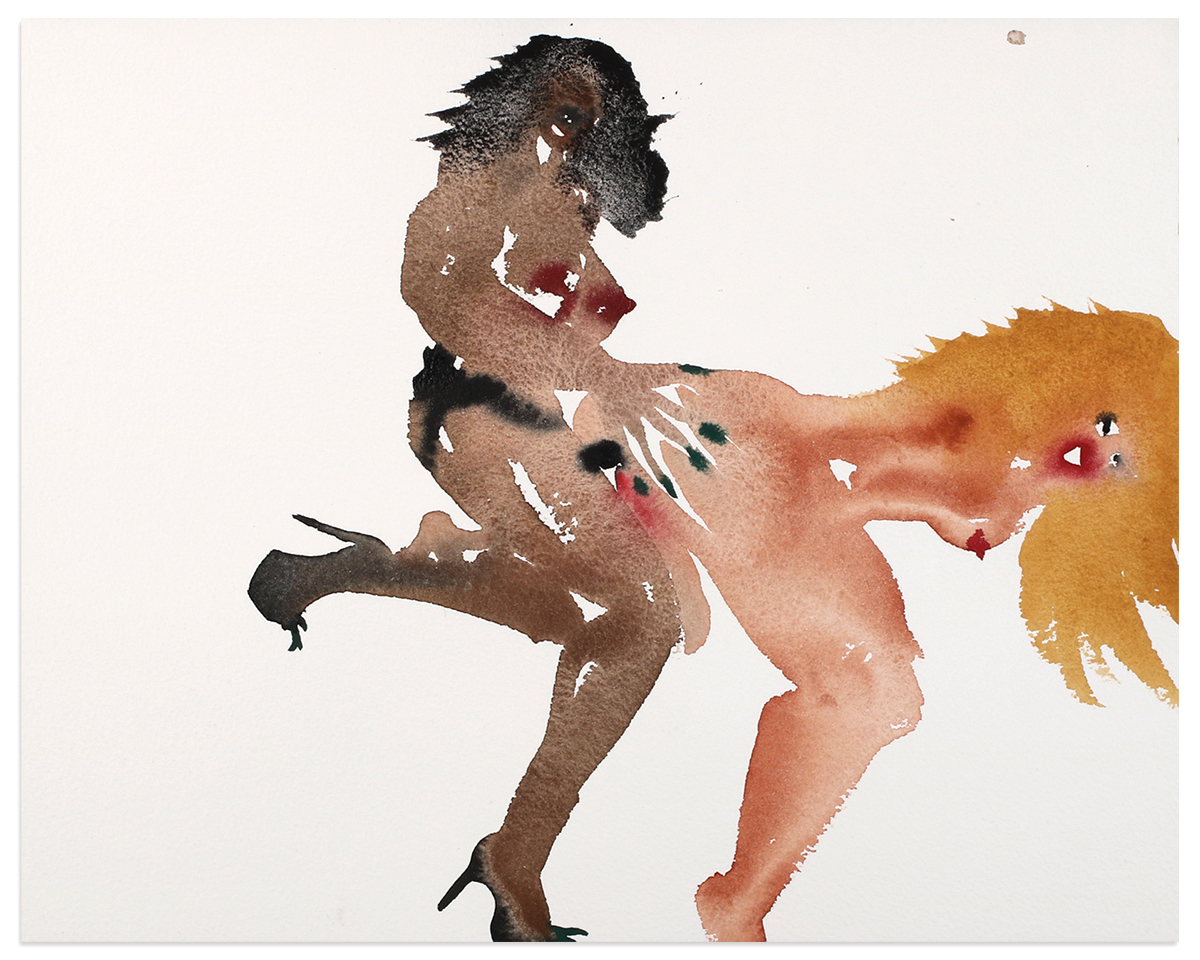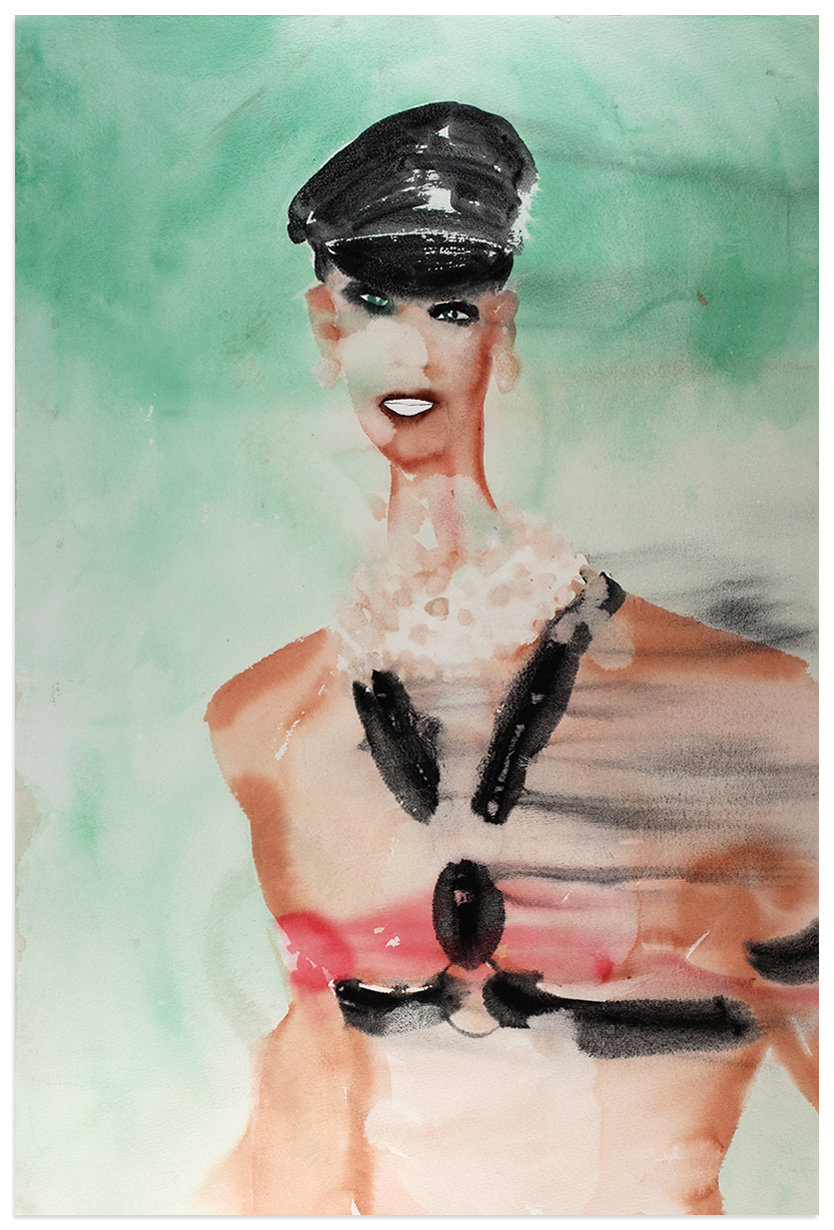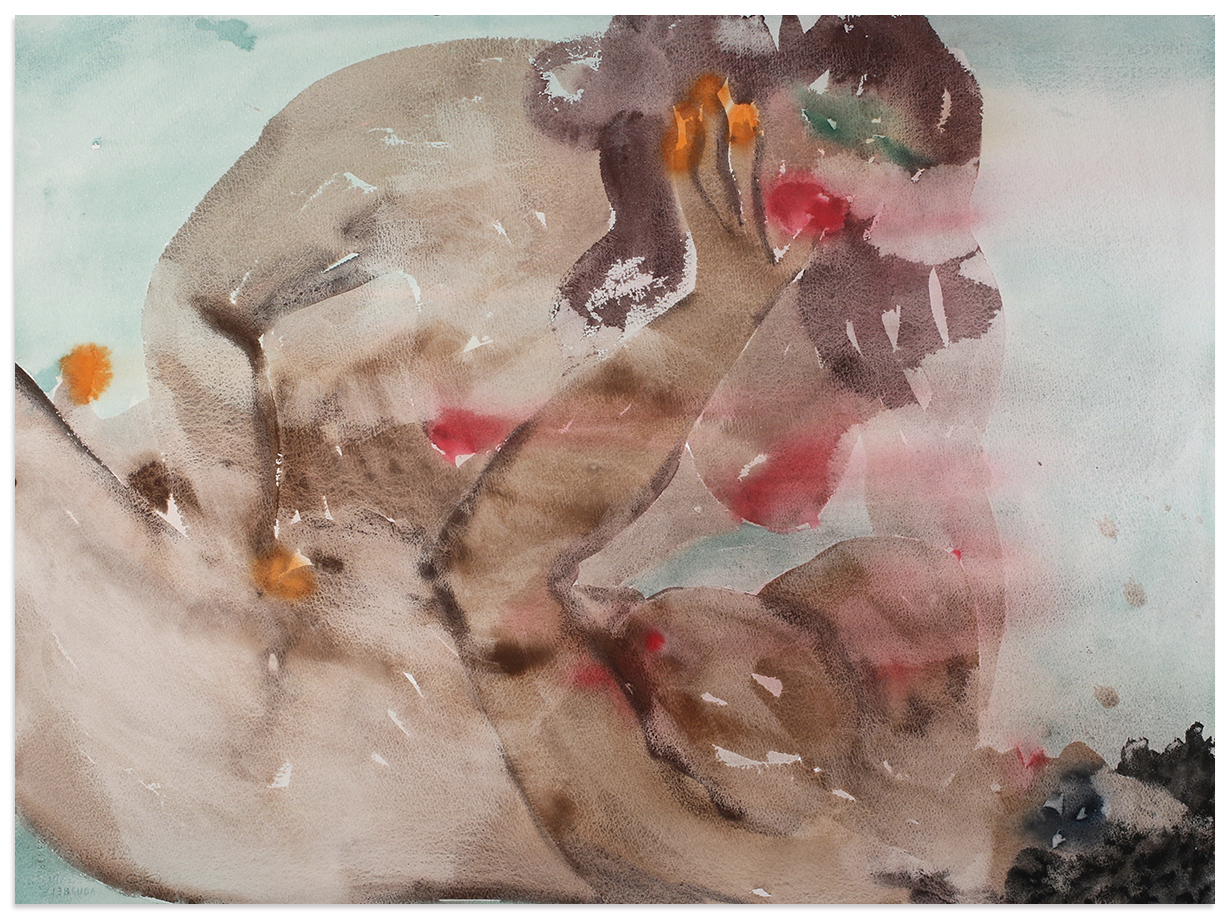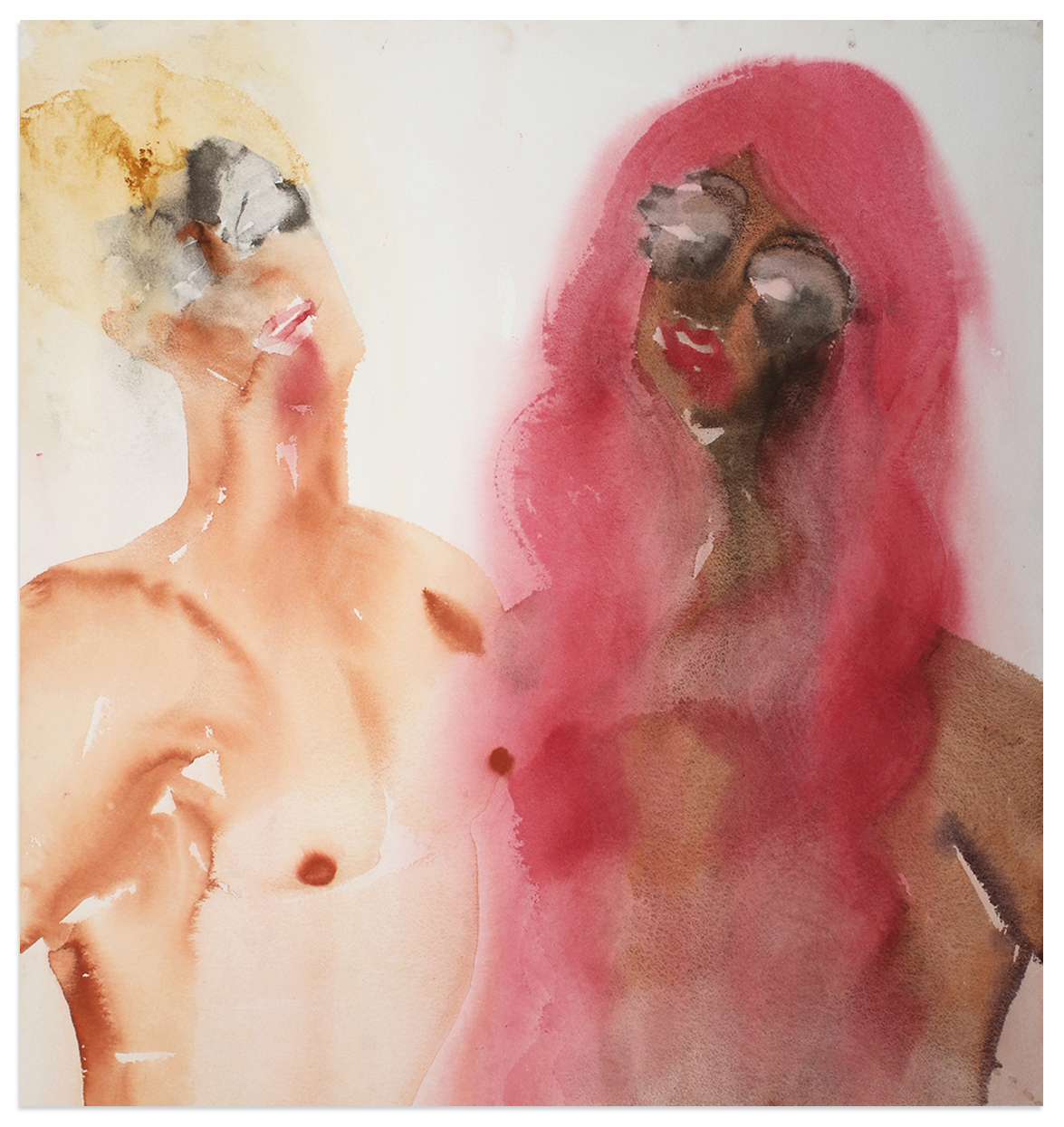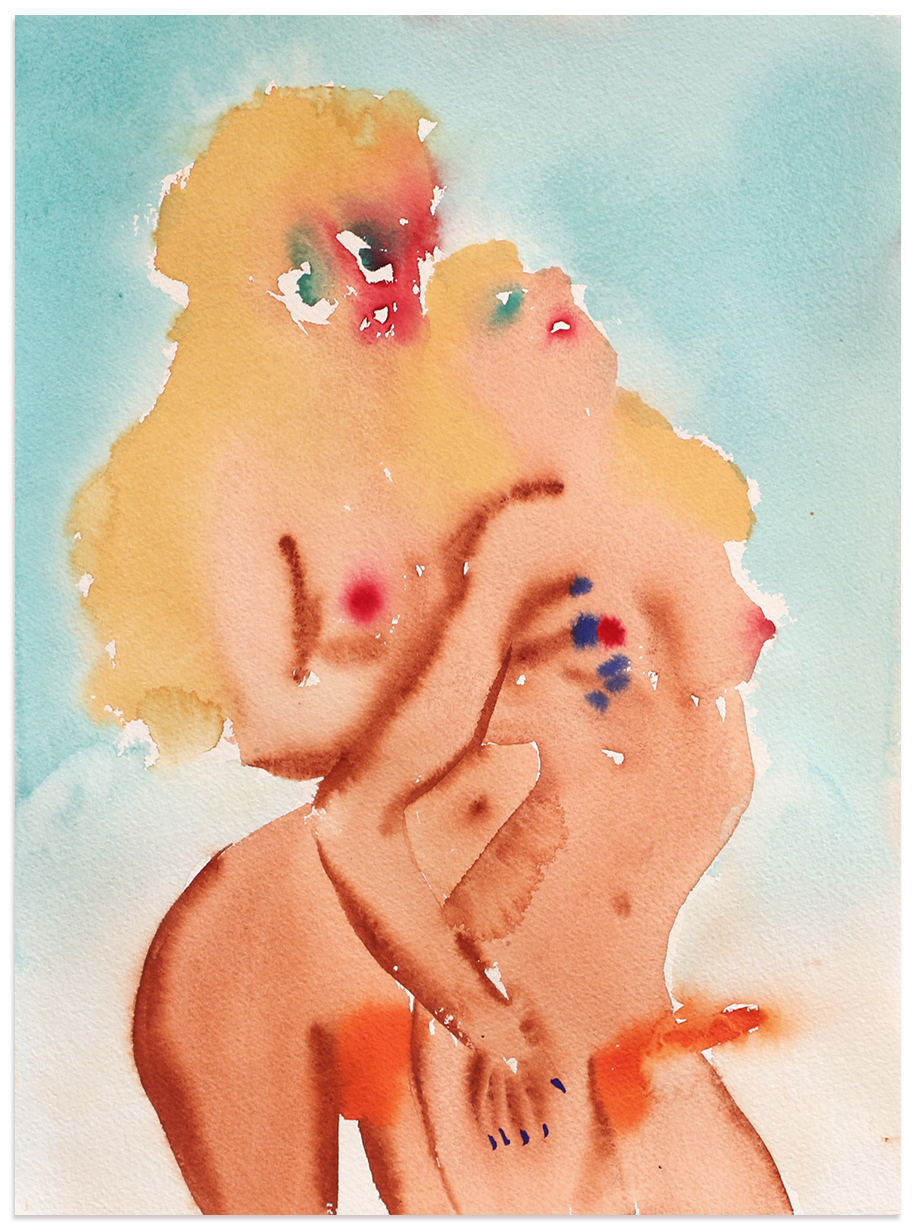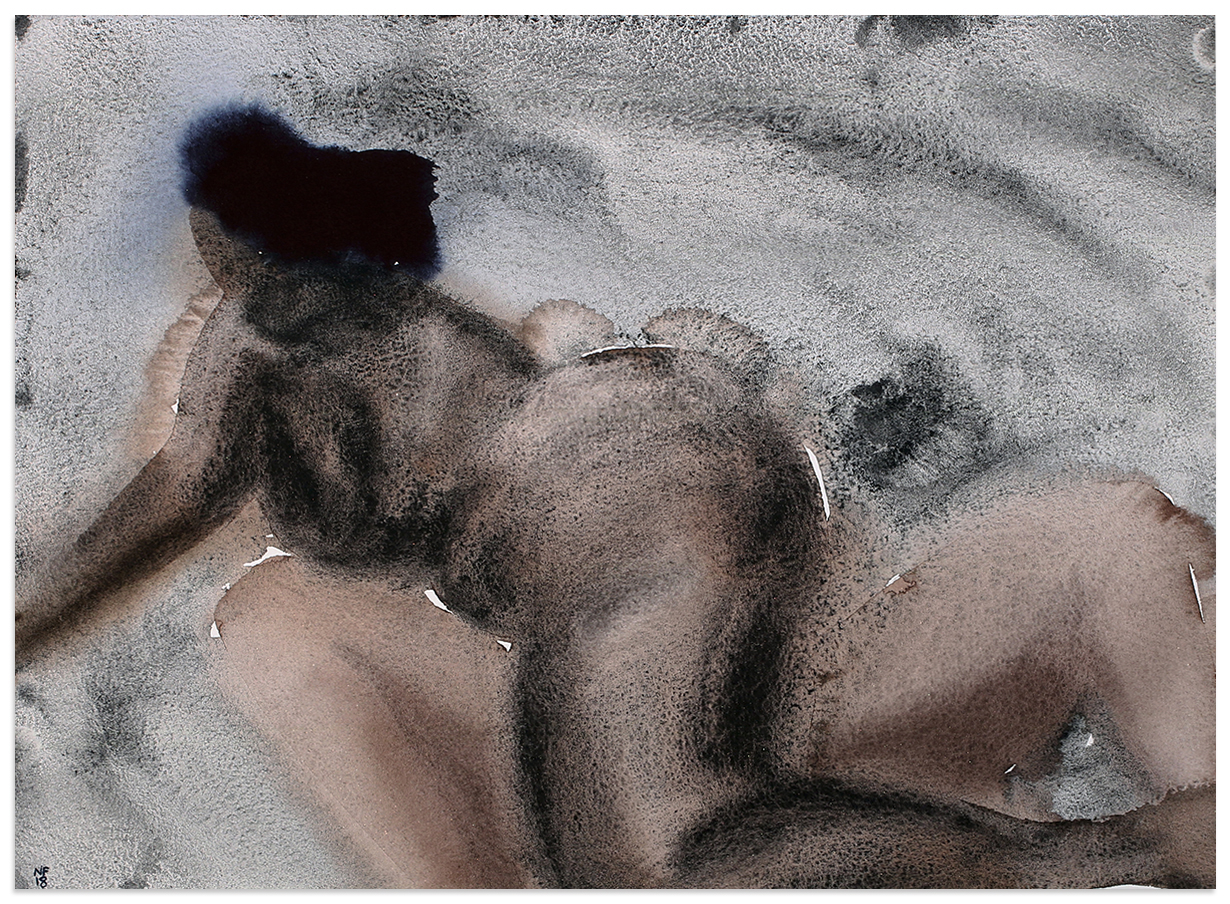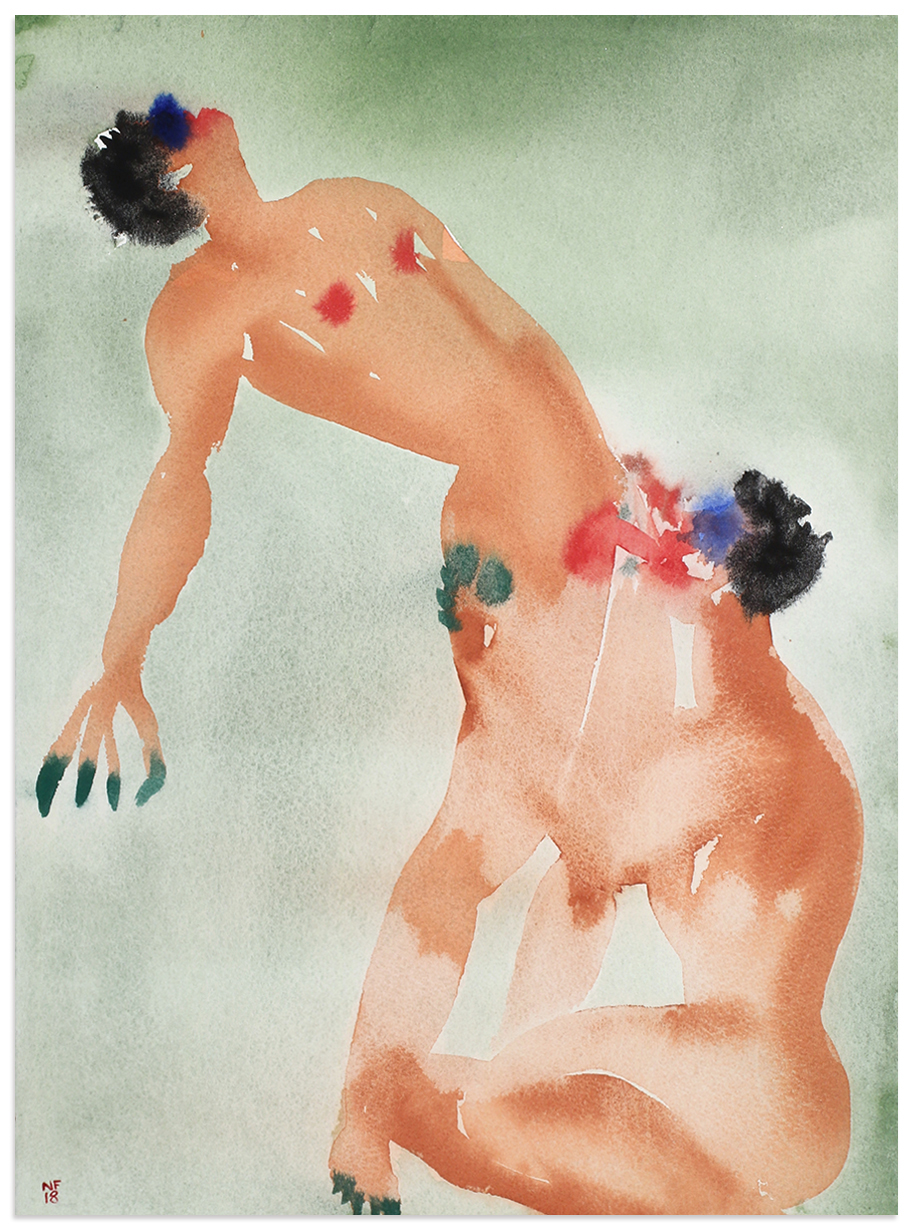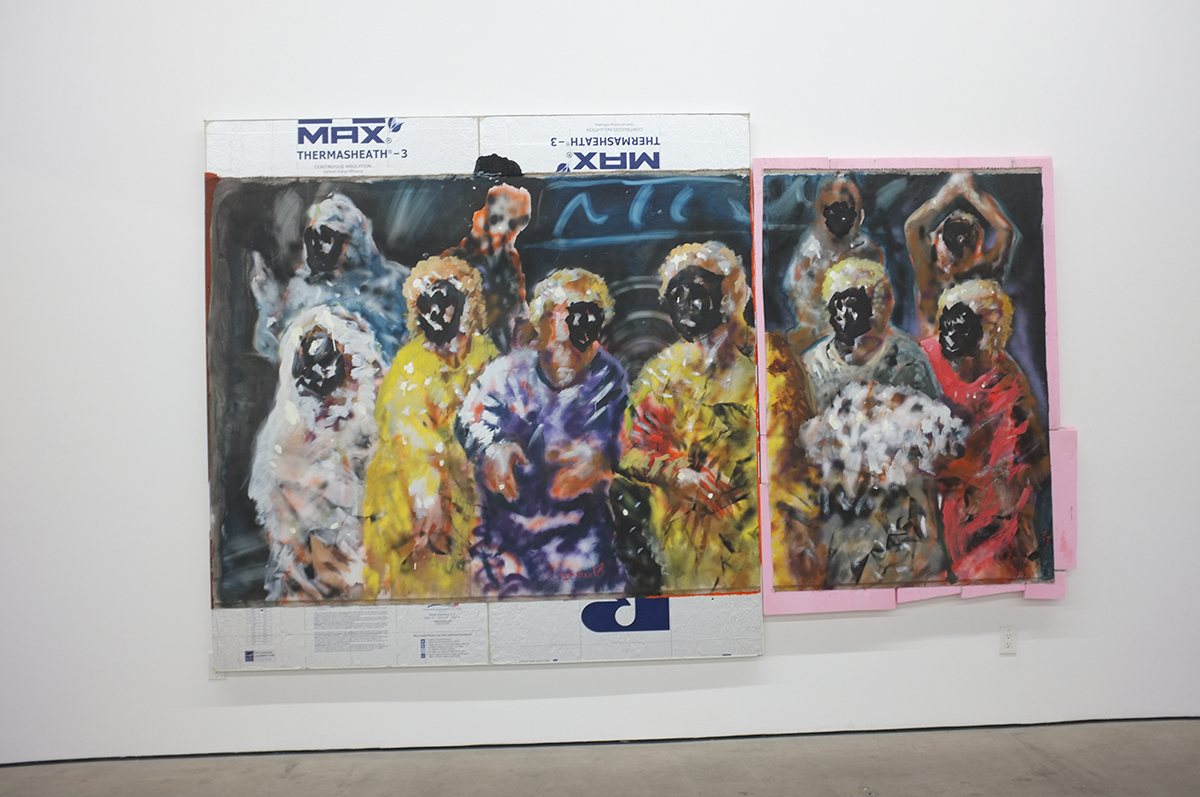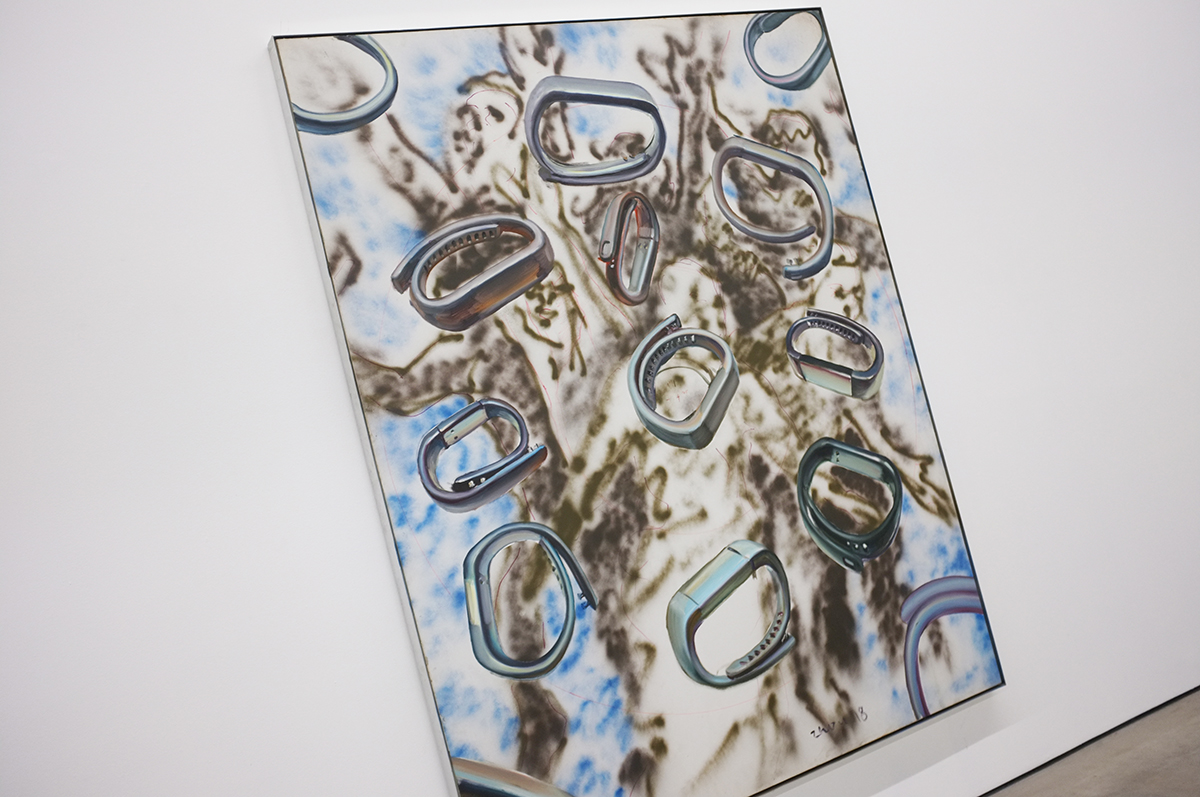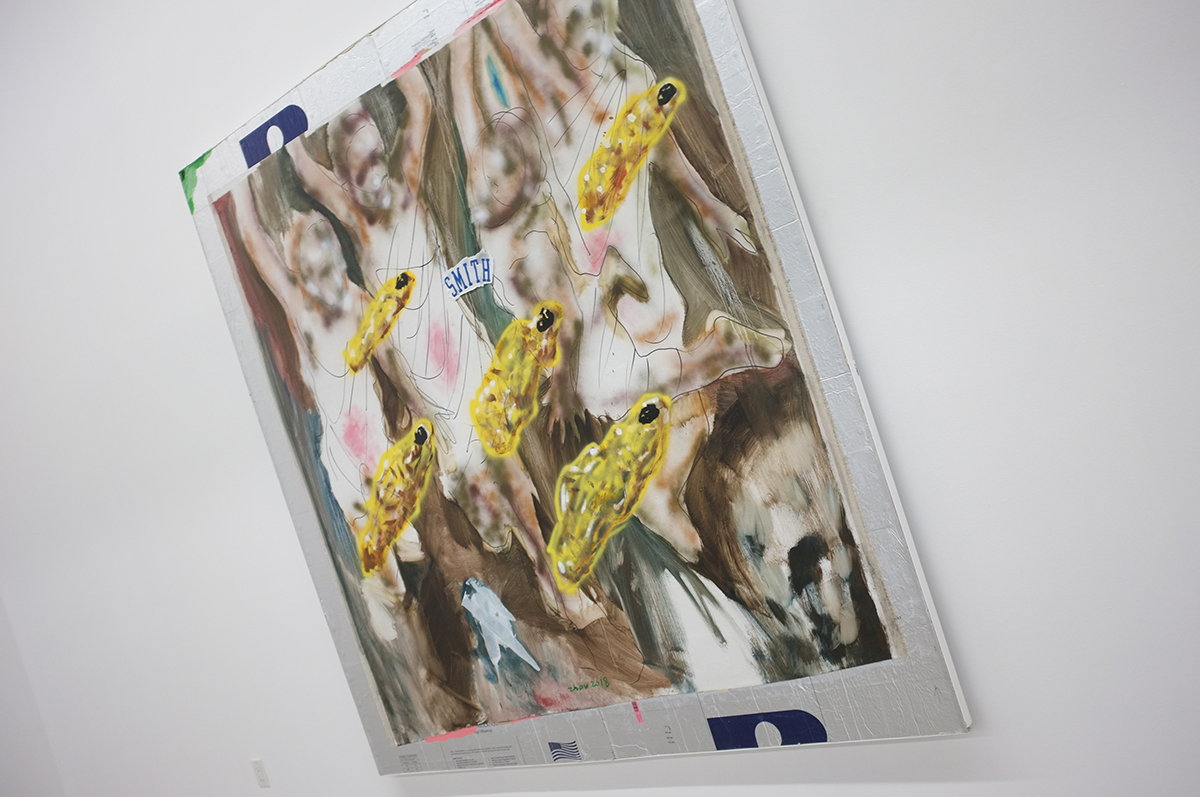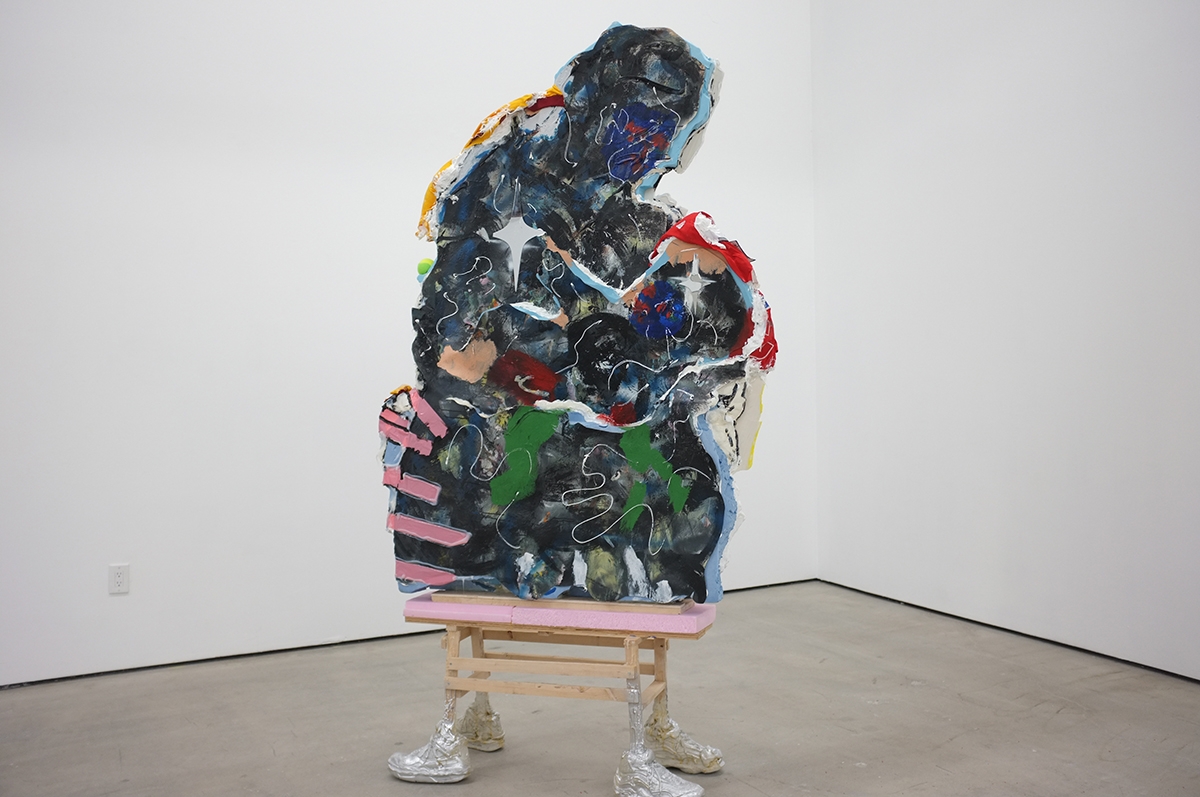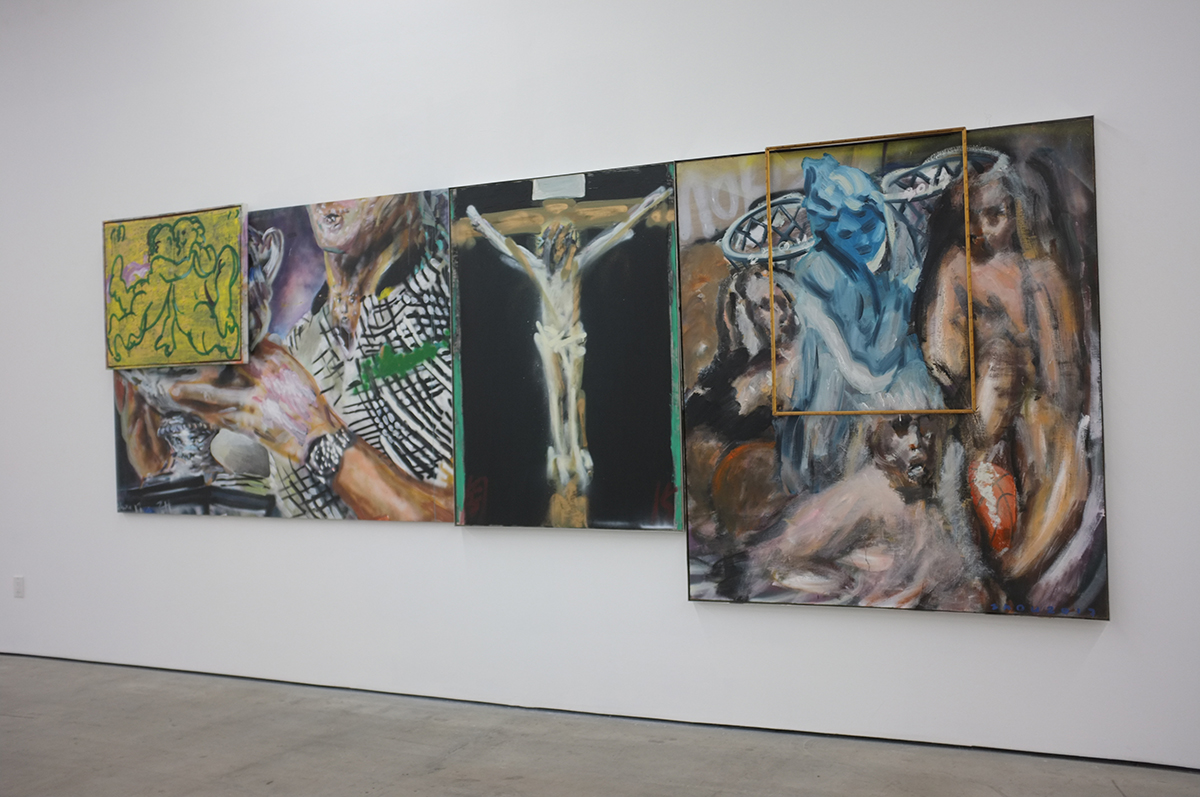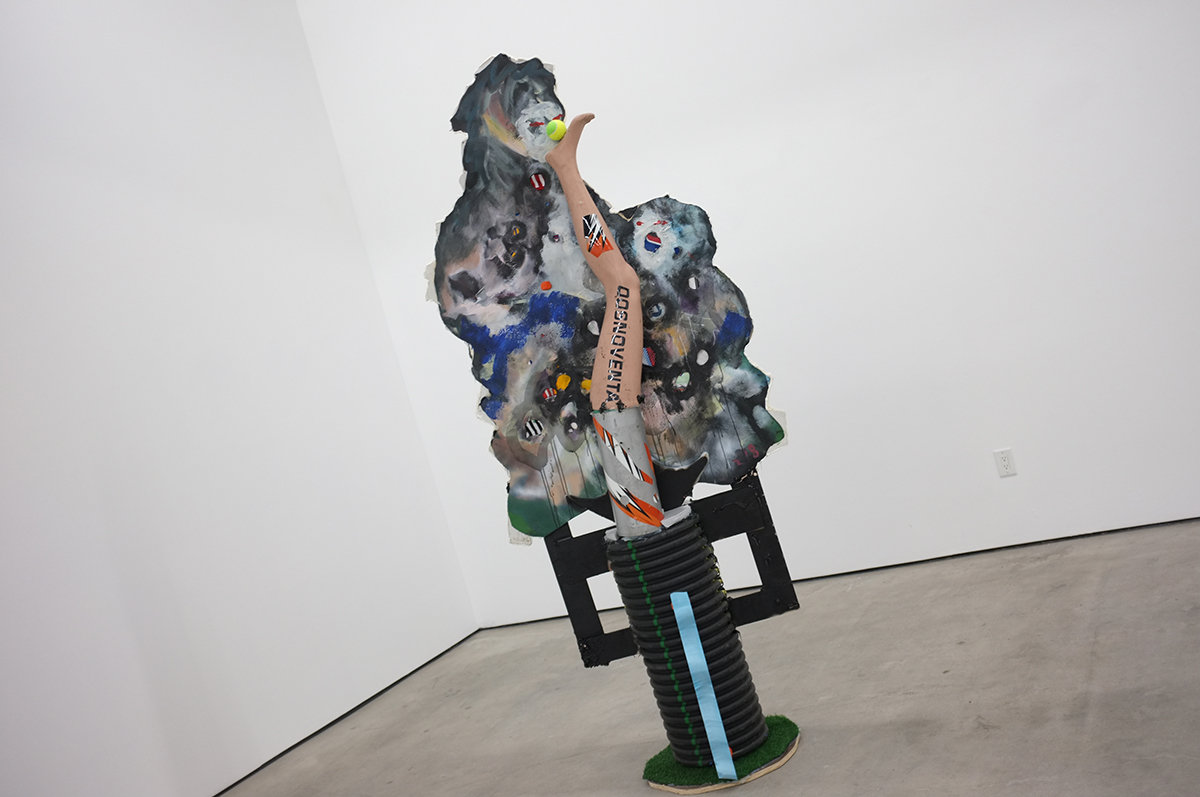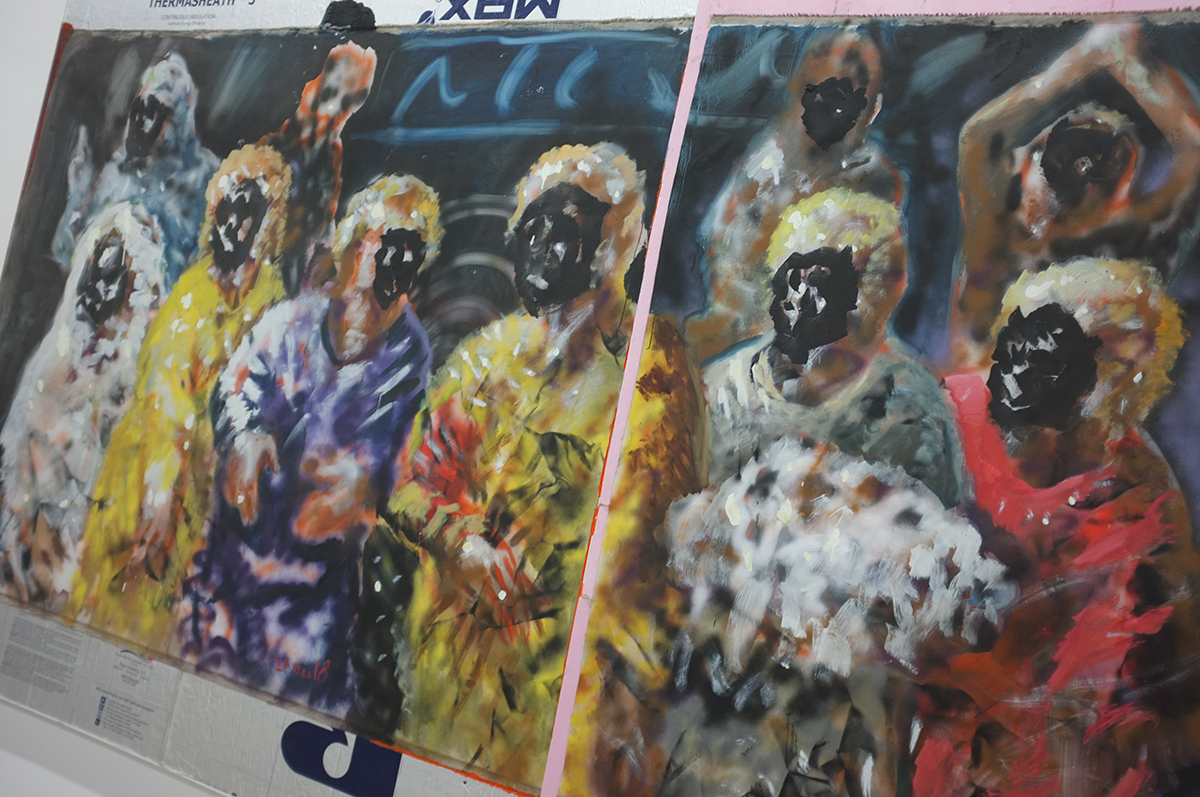text by Emma Grimes
At Court Tree Collective, a family-run gallery devoted to emerging artists, the London-based painter Theo Bardsley is on view with Two Sides of Sunday, a series of new works in azure blues, forest greens, and autumnal browns. His paintings capture the many ways people spend a Sunday—binge-watching Netflix, bathing, fighting a hangover—with a gaze that floats between affection and irony.
In Hair Of The Dog, a dapper, lonely man nurses his hangover in a stylish pub. Two pints of Guinness rest on the table, one full, one empty and nudged to the side. The outline of the drained glass looks as if it could have been drawn in chalk, the paint appearing coarse and granular.
In another work, The Late Rise and The Early Smoker, Bardsley employs the same technique on an ashtray. Behind a sleeping woman tangled in a blanket, a man smokes. On the table beside him sits an ashtray, rendered only in outline. His work stops just shy of completion, as if these tableaus are a faint memory from a dream.
Theo Bardsley
The Late Rise and The Early Smoker, 2025
Oil on canvas
44 × 32 in
Courtesy of Court Tree Collective
Both these scenes and his other works carry a distinct melancholy. Even when the figures aren’t physically alone on the canvas—and many are—there is distance and isolation even in shared moments. Everyone in Bardsley’s world appears preoccupied and never fully present, like the incomplete renderings of the pint and ashtray.
Like his Naive art predecessors, Bardsley flattens space and eschews practical details. The smoker’s hand, for instance, is an oblong blob that’s legible as a hand only by its placement. The smoke drifts out of the man’s mouth in cloudy, gray-white flecks. Each is a small, deliberate stroke. There’s a tension between these static, almost tangible bits of smoke and the movement they imply. Bardsley makes such a fleeting moment feel graspable.
In A Face Mask and Leftovers for Breakfast, a figure in a red robe and green face mask sits lost in thought. On the table before them sits a takeout box, a moka pot, and an orange Penguin Classics edition of Pride and Prejudice. Behind the figure, an open window frames leafy trees, and beside it hangs a solemn portrait. Bardsley seems to wink at artistic conventions—the idealized landscape, the serious portrait—while guiding our gaze instead toward a figure in a face mask eating from a box of leftovers. His humor lies in this elevation of the mundane and his self-aware pleasure in painting it.
His works are titled with a blunt literalness, as if to dissuade anyone from searching for deeper meaning. In one work, the title itself is a joke. A brunette woman is draped across a velvety red bed, her head resting in the crook of her elbow with a remote control at her side. The painting is called Are You Still Watching, referencing Netflix’s familiar notification to viewers who’ve been watching a show for hours.
Theo Bardlsey
Are You Still Watching, 2025
Oil on canvas
32 × 44 in
Courtesy of Court Tree Collective
Rather than painting picturesque landscapes or serious portraiture, of which he references within his own paintings, Bardsley paints the quotidianness of domestic, modern life with both a solemn melancholy and a deadpan seriousness that’s impossible not to find humorous. And he’s laughing too.
Two Sides of Sunday is on view through October 11 at Court Tree Collective, 51 35th Street, New York.





